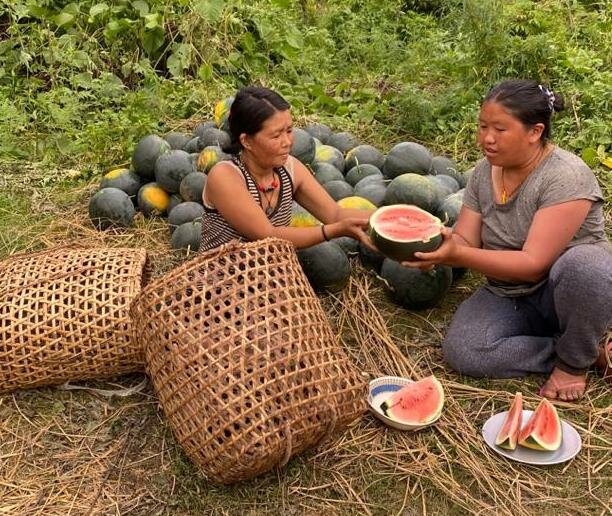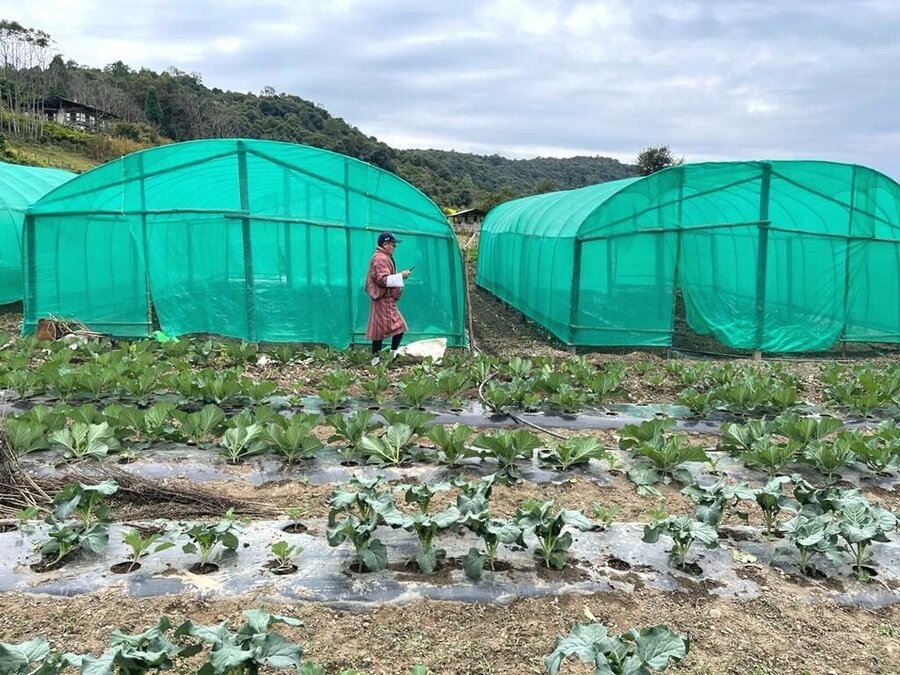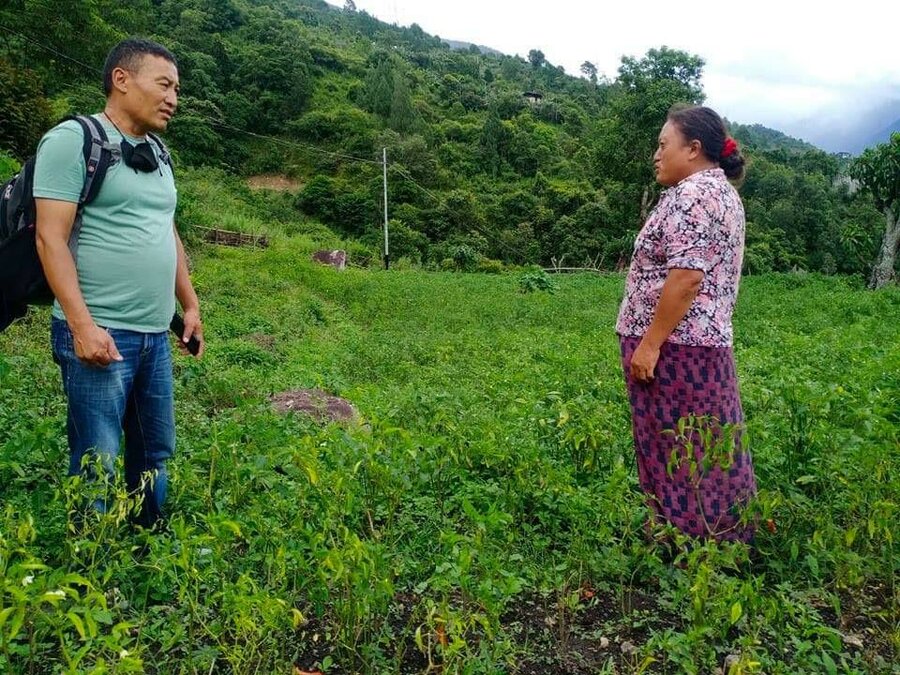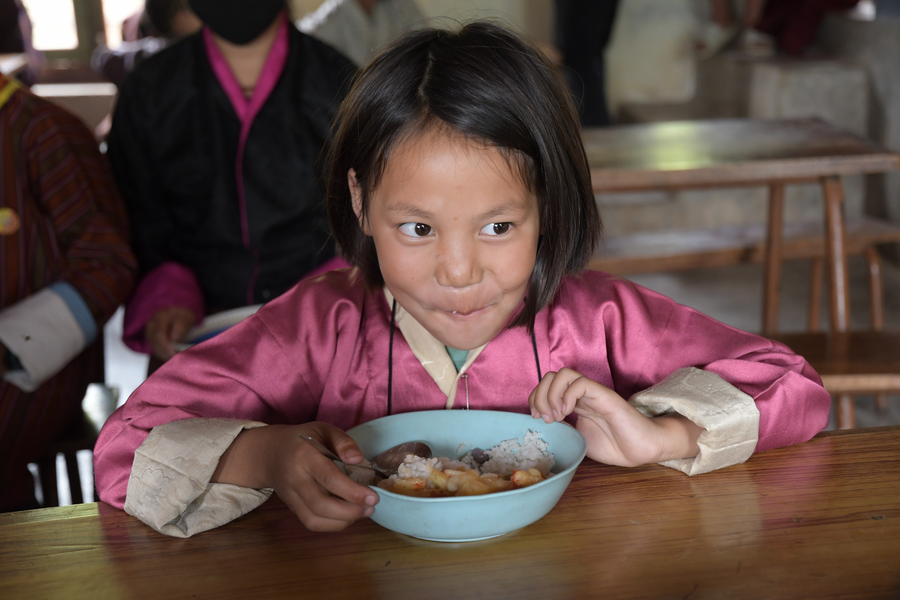6 ways Bhutan is building better food systems - from farm to table

The Land of the Thunder Dragon is also a land of contradictions. Although over 60 percent of Bhutan’s population works in agriculture, the country still depends on imports for around 50 percent of its food.
This is partially because, despite lush green hills, just 2.6 percent of the tiny Himalayan nation’s land is arable. An increase in extreme climate-related disasters such as floods and forest fires, along with other hazards such as earthquakes, has also been challenging for farmers.
To overcome systemic problems in Bhutan’s food systems – which include every step involved in getting food from farm to table – the World Food Programme (WFP) is investing US$7 million to support the Royal Government of Bhutan in improving climate-resilient agriculture.
Here are six approaches being taken along the food chain.
1) Increase demand for locally grown produce
This begins by encouraging and fostering demand for local produce in schools and institutions via community outreach as well as digital innovations such as the PLUS School Menu. This is a digital tool that uses a set of databases – food prices and food composition tables – and an algorithm to produce value-for money, nutritional meals using locally sourced food and seasonal ingredients.
This digital tool was created by the WFP Innovation team, and piloted in Punakha, Bhutan, where it increased the amount of food bought from smallholder farmers by 70 percent. With support from the Korea International Cooperation Agency, it is now being rolled out in schools across the country.

2) Boost production for smallholder farmers
Most farmers in Bhutan own small-scale, subsistence farms with low productivity and limited processing capacity, which cannot compete with cheap and plentiful imports from neighbouring India.
The COVID-19 pandemic exacerbated food and nutrition insecurity. As borders closed and lockdowns were enforced, imports were hampered and local smallholder farmers struggled to maintain production. The Government responded by introducing the Economic Contingency Plan through which farmers, with WFP’s support, were given hybrid vegetable seeds, agricultural equipment and practical training.
This support has wide-reaching benefits: hybrid seeds doubled the farmers’ yields, while specialized tools and equipment such as drip irrigation systems, greenhouses, water-harvesting ponds and mulching sheets reduced physical labour demands and mitigated water shortages.

3) Improve post-harvest management
Post-harvest management is a crucial area for improvement, as it helps reduce the amount of produce lost during transportation, sorting and storage. During the COVID-19 lockdowns, Bhutan faced a shortage of fresh local produce due to challenges in preservation and transportation.
In order to address these challenges, WFP has been working with the Government to strengthen the capacity of farmer-producer organizations and agri-entrepreneurs. Districts have been provided with post-harvest test kits and processing equipment.
Training and consultations are held to improve infrastructure such as onion-curing sheds, and in areas such as curing and packaging of vegetables for export and other commercial purposes.
4) Increase climate resilience
WFP has been holding consultations with farmers across rural Bhutan to understand their unique challenges and support them with the tools to ensure a climate-resilient harvest and reduce post-harvest losses. This is done through a range of ‘climate-smart’ agriculture tools including use of greenhouses, mulching, water harvesting, and a mix of open-pollinated seeds and hybrids.
WFP is working with the Government on analysis to better understand how livelihoods are vulnerable to climate change, for example through shifting rainfall patterns and rising temperatures. The results of the Consolidated Livelihood Exercise for Analysing Resilience will be instrumental in guiding agricultural adaptation measures across the country.
5) Remove gender barriers
86 percent of rural women are employed in agriculture in Bhutan. WFP has supported the Government’s Economic Contingency Plan to help bolster agriculture production, food security and resilience in the wake of COVID-19. Supported by funds from WFP, the plan also helped women farmers overcome gender-based barriers to agricultural productivity.
This was done by training women farmer groups in leadership, business management and book-keeping, as well as in technical areas such as production, post-harvest and marketing. This gender-sensitive approach is vitally important, as problems in food systems tend to affect women more due to limited access to assets and exclusion from decision-making processes.
“What matters the most is that I can look after my family members’ welfare while having no worries about what to eat for dinner tonight,” said Aum Kinzangmo, a smallholder farmer from the Buli Vegetable Group, which benefited from the plan.

6) Educate on nutrition
Increasing the quality and quantity of local produce and linking farmers to schools has the added benefit of improving dietary diversity and children’s access to healthy food. This is especially important as Bhutanese schoolchildren consume significant amounts of junk food. In fact, 40 percent of students drink carbonated soft drinks and 32 percent eat fast food 4 days a week.
Micronutrient deficiencies also remain a major public health issue, with anaemia at 35 percent in non-pregnant women and 31 percent in adolescent girls. WFP’s work with the Government includes developing a national social and behaviour change strategy to improve dietary and health practices of school children aged 5-18, as well as working with UNICEF and the Royal Education Council to reinforce nutrition and health education via an improved school curriculum.
WFP has also partnered with the Tarayana Foundation to work on a nutrition and health advocacy campaign across four districts, to help vulnerable rural population groups eat healthily during the COVID-19 pandemic and beyond. The campaign intends to improve food and lifestyle choices, instil positive dietary behaviours, and improve cooking and storage practices among target populations.

